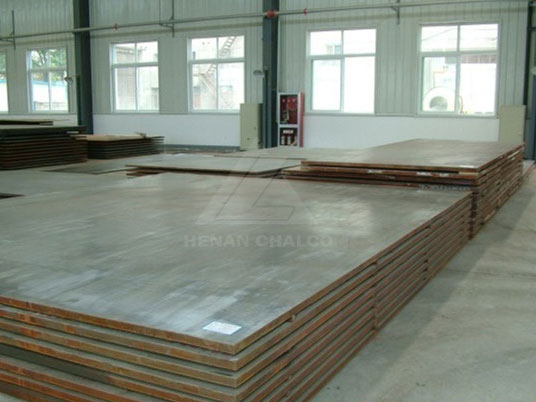Aluminum has excellent electrical conductivity and thermal conductivity, making it widely used in the electrical industry. Aluminum is non-ferromagnetic, which is an important characteristic for the electrical industry and the electronics industry.
The specific strength of some aluminum alloys is comparable to that of steel, and its specific stiffness exceeds that of steel. Therefore, aluminum alloy materials have been widely used in transportation, chemical industry, machinery, power, electronics and construction, especially in aerospace industry.
The temperature of the joint is usually <300℃. If titanium is added between aluminum and steel, both aluminum titanium steel bimetallic bimetal transition joints are used, the bonding strength and conductivity can remain unchanged when the service temperature reaches 450 ℃.
Usage:
1. Aluminum-titanium stainless steel pipe joints are used for the transition connection between the components of large-scale cold mills and the pipes conveying liquid nitrogen and liquid oxygen.
2. Aluminum titanium steel bimetallic bimetal transition joints used in ship structure construction.
3. Titanium acts as the intermediate layer in the multi-layer composite plate which replaces the flange connection in the cryogenic device, such as the corrosion-resistant aluminum alloy-pure aluminum-titanium-nickel-stainless steel composite plate.
The specific strength of some aluminum alloys is comparable to that of steel, and its specific stiffness exceeds that of steel. Therefore, aluminum alloy materials have been widely used in transportation, chemical industry, machinery, power, electronics and construction, especially in aerospace industry.
The temperature of the joint is usually <300℃. If titanium is added between aluminum and steel, both aluminum titanium steel bimetallic bimetal transition joints are used, the bonding strength and conductivity can remain unchanged when the service temperature reaches 450 ℃.
| Base plate alloy | Q235、Q245R、Q345R、DH36、CCSB |
| Middle plate alloy | TA1、TA2 |
| Cladding plate alloy | 5083, 1060,1070 |
| Standard | CB 1343-98 |
| Cladding plate thickness | ≥10mm |
| Base plate thickness | ≥12mm |
| Length | ≤3000㎜ |
| Width | ≥20mm |
Usage:
1. Aluminum-titanium stainless steel pipe joints are used for the transition connection between the components of large-scale cold mills and the pipes conveying liquid nitrogen and liquid oxygen.
2. Aluminum titanium steel bimetallic bimetal transition joints used in ship structure construction.
3. Titanium acts as the intermediate layer in the multi-layer composite plate which replaces the flange connection in the cryogenic device, such as the corrosion-resistant aluminum alloy-pure aluminum-titanium-nickel-stainless steel composite plate.












